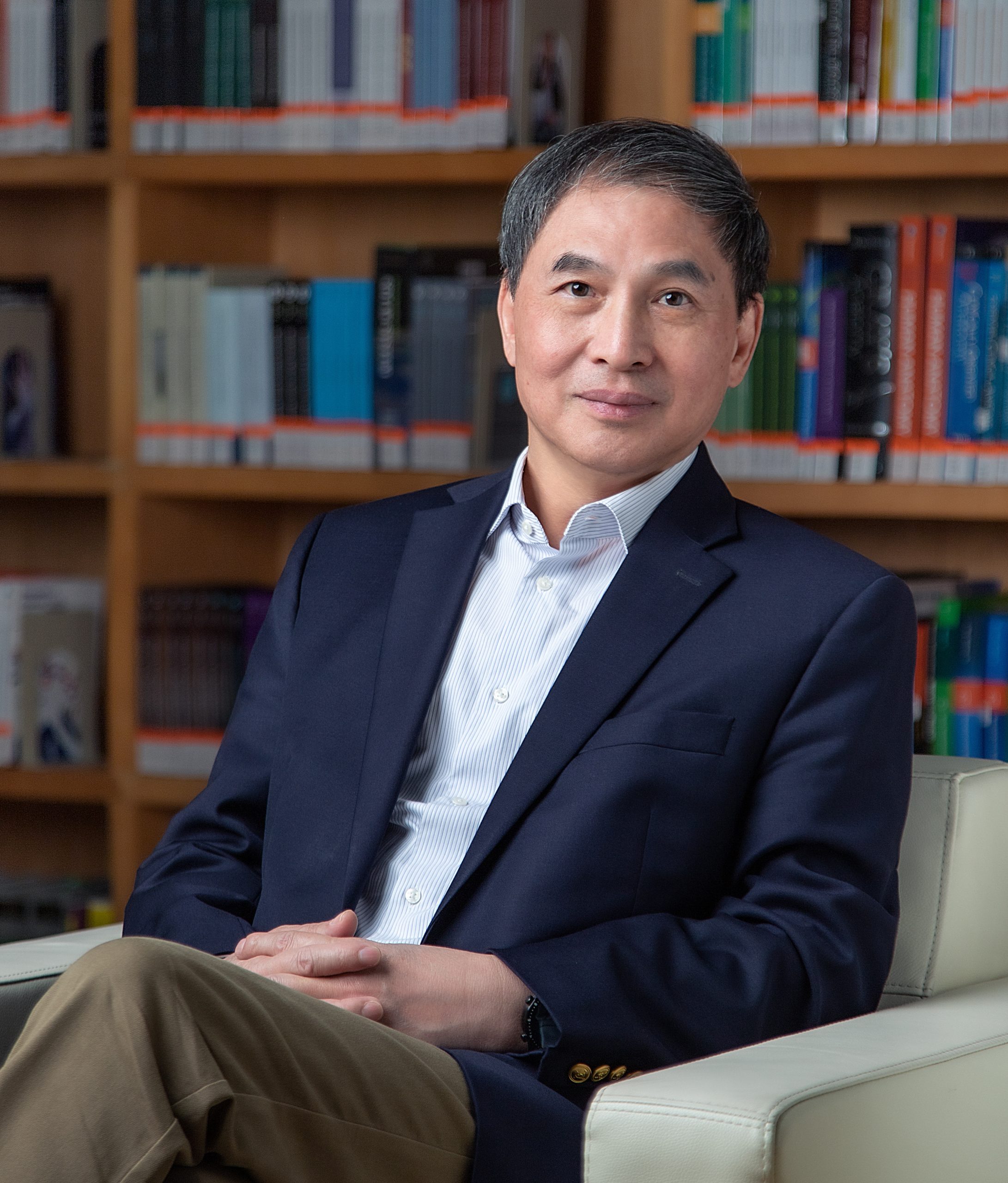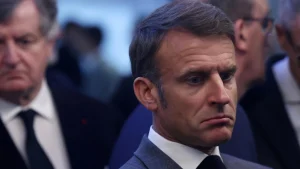Who is Pushing the Current World Order Towards the Brink?
Collapse of the Current International Order
Since the Peace of Westphalia in 1648, the world order has been shaped by major powers. The world order has also disintegrated because of major powers. Today, the international order established after World War II, with the United Nations as the core, is rapidly collapsing. Although the order is struggling to demonstrate its existence, it seems to have nothing to do with international politics in reality. Whether it is the Russia-Ukraine conflict or the Palestine-Israel conflict, the United Nations seems to be just a “beholder”.
Four of the permanent five of the United Nations Security Council have already engaged in war but varying in degrees of involvement.
The war in Ukraine, which has been a proxy war between the United States with its Western allies and Russia from the beginning, is still ongoing. The reason why Russia launched this war is that the continuous expansion of NATO led by the United States directly threatens Russia’s national security. The war is directly manifested as a war between Russia and Ukraine. However, it is easy to tell that the war is actually a contest between Russia and NATO. Therefore, NATO led by the United States has consciously involved and participated in the war from the very beginning. As the war went on, NATO countries became more and more involved.
The United Kingdom, claiming to be and regarded as the most important ally of the United States in Europe, has been naturally standing with the United States without hesitation from the start.
France tries to adhere to a relatively independent foreign policy though it has been deeply involved in the war. Abstractly speaking, what makes France different from the US is that France is fighting for Europe. It is clear to France that the US is sacrificing European interests for its own benefit and Europe must protect itself instead of relying on America.
The United States is conducting a proxy war in Europe. From the very beginning, the goal of the US, as it claims, is to completely defeat or drag down Russia, so that Russia is no longer capable of “doing bad things.” Except for sending troops directly to fight on the frontlines, the US has done everything it could. The United States has funded Ukraine more than all other countries combined, and it has also instructed Ukraine to fight a cognitive war in the Internet world. One thing that distinguishes the United States from other NATO countries is its distance from the front line unlike France and Germany, the direct victims of this war.
The complexity of this war made it neither end as quickly as Russia expected nor completely devastate Russia as NATO hoped. To destroy a major power like Russia is not easy and the United States does not want to devote all its efforts to this war. Meantime, the US is also preparing for another “war” with China, resulting in a tense Sino-U.S. relationship. In April, the American Secretary of the Treasury Yellen visited China and accused China of “overcapacity” which threatens the world economy. Immediately followed behind, Secretary of State Blinken visited China, demanding that China should stop trade that could support Russia in the war in Ukraine. Obviously, the United States is trying to shift the responsibility for failing to defeat Russia to China, although America itself and its allies have never stopped doing business with Russia.
What is difficult for China to understand is that the United States is preparing for war with China in the Indo-Pacific region while it hopes that China could follow its order and cut off trade contacts with Russia so that NATO led by the US can defeat Russia faster. Then US can free up its hands as soon as possible to deal with China wholeheartedly. Why would China be willing to cooperate with the country perceiving it as a threat to deal with its partners? Only Americans can understand the logic behind this hypothesis.
The Logic of Zero-sum Game in Western Civilization
What the United States embodies is the typical “zero-sum game” world outlook. In this worldview, states are divided into “friends or foes”, or “either with me or against me” camps. Therefore, an “enemy” must be created even if it does not exist. After the disintegration of the Soviet camp, the United States gradually shaped China as its “enemy”. The Indo-Pacific strategy emerged against this background. For the US, the goal of the Indo-Pacific strategy is either a “Cold War” to contain China like the containment of the Soviet Union; or a “hot war” to completely devastate China.
It is believed that there is a good chance that a war between China and the United States will break out, whether it is a cold war or a hot war.
In American cognition, there are too many theories arguing for the inevitability of wars. The two mainstream schools of Western international relations, realism, and liberalism, are both theories about war. The former focuses on why wars occur, while the latter focuses on why wars do not occur.
Realist international relations scholars, like John Mearsheimer, a professor at the University of Chicago, have suggested very early that with the rise of China, there will be a war between China and the United States. This is not to say that Professor Mearsheimer preaches war, but Westerners generally believe that war between emerging and existing great powers is inevitable. This belief is also reflected in the so-called “Thucydides Trap” proposed by Graham Allison. The core of this theory is that great powers cannot co-exist and war between them is inescapable. Allison’s research team found evidence from the history of international relations, saying that there have been 16 power transfers from existing powers to emerging powers since 1500, 16 of which were through wars while only 4 were peaceful.

Graham Allison, Professor at Harvard University, the author of Thucydides Trap Theory
Although liberal believers seem to be advocates of peace, in fact, they often provoke wars. Starting from Kant’s “Perpetual Peace”, the liberal school observed that since modern times, wars have often occurred between democratic and non-democratic regimes, or between the group of democratic regimes and non-democratic regimes. So, liberals concluded that non-democratic regimes must be transformed into democratic regimes to achieve peace. Peace is the pursuit of liberalism which represents supreme value, so liberalism easily justifies war. That is to say, the war to overthrow non-democratic regimes is moral and just. They have put the theory into practice many times. The United States overthrew non-democratic regimes through color revolutions, proxy wars, military intervention, and even direct wars. After the Cold War, the British and Americans put forward the concept that “human rights are more important than sovereignty” and directly invaded sovereign states like Iraq and Afghanistan.
Serious thinkers never underestimate the possibility of war. During the Cold War, the United States and the Soviet Union maintained a cold peace for half a century through the nuclear deterrence that ensured mutual destruction. But cold peace only means that there is no direct military conflict between the two great powers. Proxy wars have never stopped. The end of the Cold War declared the end of cold peace, and the United States became the only supreme hegemony. Peace or war rests upon America’s whim. From the wars in the former Yugoslavia and the Middle East to the proxy wars in Ukraine caused by NATO’s eastward expansion, all of them are related to the United States. Now, after the United States defines China as the only state that has the ability to challenge it on a global scale, it has shifted its strategic focus to the Indo-Pacific region.
Indo-Pacific Deployment and Containment of China
On April 29, New York Times published an article titled A New Pacific Arsenal to Counter China, showing off the US military deployment in the Asia-Pacific region. The article said that since taking office, President Biden has implemented a strategy to expand the use of allies’ bases in the Asia-Pacific region by the US military. A series of new weapon systems have been deployed there. Biden also said U.S. troops would defend Taiwan from the military operations of mainland China. Ely Ratner, Assistant Secretary of Defense for Indo-Pacific Security Affairs, said: “2023 saw the most transformative U.S. military posture in the Indo-Pacific region in a generation driven by us.”
In fact, the United States has done much more than expanding its military bases and deploying weapons. In recent years, the US has built more and more “mini-multilaterals” around China’s first island chain (Taiwan) and second island chain (South China Sea), which is what China calls “gangs”.

Diagram of the Island Chain Strategy
So far, the United States has built at least seven “mini-multilaterals” in the Indo-Pacific region:
1. US-Japan-Philippines Trilateral Alliance
2. US–Japan–Korean Trilateral Pact (JAROKUS)
3. Australia-UK-US Trilateral Alliance (AUKUS)
4. US-Japan-India-Australia Quadrilateral Security Dialogue (QUAD)
5. Five Eyes (US, UK, Australia, Canada, and New Zealand)
6. The trilateral alliance between the United States, Japan and Vietnam
7. US-India-Vietnam Trilateral Alliance.
Many of these alliances have already taken shape, while some, such as the sixth one, are still in the incubation stage. It’s also possible that more “mini-multilaterals” will emerge in the future.
Possibility of War: Willingness, Ability, and Diplomacy
Regarding the purpose of these alliances, Deputy Secretary of State Kurt Campbell said in 2023 “We have deepened our alliances and partnerships overseas in ways that would not have been imagined a few years ago.” A U.S. admiral said, “With our allies, I do think that the United States is playing a stronger hand of cards, and we will win any battle in the Western Pacific.”
Under bilateral mutual defense agreements between the United States and its allies in the Indo-Pacific region, if one country’s assets are attacked, other countries will respond.
The United States is preparing for war.
However, China will not be that naive to believe that war will not happen, and peace will naturally come. As many observers have seen, if the United States is openly preparing for war, China is also quietly preparing to deal with all possible wars. With the development of the economy, China’s military modernization is accelerating comprehensively. But overall, China’s military expenditure is only one-third of that of the United States. What America wants to maintain is its global hegemony, while China’s strategy is only to protect itself. Especially in the Asia-Pacific region, the quantity of China’s weapons in all aspects has surpassed that of the United States, and the quality is no less than that of the US.
If both China and the United States are preparing for war, is there any hope for peace?
As far as Sino-US relations are concerned, whether it is war or peace, it involves the three major elements of these two major powers, namely willingness, ability, and diplomacy.
American hawks have an intensive willingness to contain or even defeat China. No country in this world will underestimate the will. The United States is an action-oriented country. Once the US believes that it can win, it will inevitably launch a war. Although the Sino-US relationship has been stopped from falling since Biden took office, most people are preparing for a “hard war” that the US may launch against China if Trump takes office again. People will not ignore the possibility of a comeback for this team and the sharp decline of the Sino-US relationship.
The problem is that America’s capabilities today are far less powerful than its will. Regardless of the withdrawal from Afghanistan, the ongoing Russia-Ukraine war, and the Palestine-Israel conflict, the strength and world influence of the United States are not as good as before. Countries around the world are not so obedient to the United States, even its traditional allies. Nobody believes that the United States without the ability to resolve regional conflicts can contain and defeat the world’s second most powerful country.
In terms of diplomacy, although Biden has restored the traditional alliance of the United States, the external condition of the alliance has undergone fundamental changes, namely the common enemy. This recognized “enemy” actually does not exist today. Although the US has been portraying China as its “enemy” and persuading other countries that China is their “enemy” for many years, it is difficult to say that the efforts have been effective. More and more countries do not want to “choose sides” between the United States and China.
Moreover, there are contradictions between the United States and its allies. If “alliance” means a public good of the member states, the United States, as the leader of the alliance, must provide this public good. However, today the United States is no longer capable of providing sufficient public goods. In this regard, Trump’s judgment is correct: the United States has no ability to provide security protection for its allies unless its allies can provide sufficient “protection fee” to it. The “Indo-Pacific Economic Framework” designed and promoted by the Biden administration is not very attractive to other member states because the United States cannot open its market to other member states. Trump has declared that if he returns to power, he will withdraw from the “Indo-Pacific Economic Framework”.
Hope for Peace: China’s Inclusive Multilateralism
What about China’s willingness, ability, and diplomacy?
In today’s world, China’s desire for peace and pursuit of peace is unmatched by all other major powers. Most of the other major powers have played the role of conqueror or war initiator since modern times, while China is a victim of imperialist wars. In this regard, the United States’ perception of China is just the opposite of China’s self-perception. The United States defines China as a country that has the will to challenge it on a global scale, but China’s self-perception is to maintain global peace and unify mankind.
China is capable of pursuing peace. Over the past few decades, China has contributed most to UN peacekeeping forces. In the Middle East, China has brokered peace between two rivals, Iran and Saudi Arabia. China has also created a positive and safe environment for the reconciliation of Fatah and Hamas, the two factions in Palestine.
China is more capable of maintaining peace with its neighbors. In recent years, the United States has taken advantage of the complex situation around China to create a hostile surrounding environment for China, but it has not been able to achieve its intention. In the early days, American hawks had been clamoring that “there must be a war between China and Japan”, but this war did not happen. Although the contradiction between China and Japan still exists due to the attitude of the Japanese right-wing government toward historical issues, China has maintained its strategic focus in dealing with relations with Japan. The same is true of relations between China and South Korea. On the South China Sea issue, the United States has not only devoted itself to it, but also almost used the power of the whole world to target China, but China has not only defended its core interests but also avoided direct conflict with the United States. This is especially true on the Taiwan issue. Through repeated arms sales to Taiwan, the United States has tried to turn Taiwan into a fortress of war. Moreover, it is trying to promote Taiwan independence by “cutting sausages”. Nevertheless, each action has gone to the opposite of the wishes of the US, that is, to promote the reunification of the Chinese nation in the same way.
More important is China’s diplomacy. While the United States practices exclusive multilateralism and establishes “gangs”, China is devoted to inclusive and open multilateralism. To a large extent, this inclusive multilateralism is reshaping the world order. This is very clear in terms of economy and trade. Many Western observers have already observed that although the United States has been carrying out trade protectionism and even an economic cold war of “decoupling and chains breaking” against China, China’s diplomacy, including the “Belt and Road Initiative”, are reshaping the world economic and trade order.
The strategic impact of inclusive multilateralism should not be underestimated. Inclusive multilateralism provides ASEAN with a prerequisite strategic condition, that is when the US demanded ASEAN countries “choose sides”, China did not do so. China allowed (some) ASEAN countries to continue to maintain security relations with US while developing economic and trade relations with China.
Inclusive multilateralism also plays a role for European countries. Although EU countries (especially France and Germany) are traditional allies of the United States, China does not regard these countries as its enemies. On the contrary, China has adopted an inclusive policy towards the EU. Germany and France bear the biggest losses of the Russia-Ukraine war, and they also want peace in Europe. In this regard, China and Europe share common interests. Following the German Chancellor’s visit to China, China’s President Xi Jinping has visited French, Hungarian, and Serbian in Europe. Before Xi’s visit, French President Macron emphasized in an interview with Financial Times: “I tend to choose my relationship with the United States and China myself, rather than being imposed by each of the two sides.” Macron admitted frankly that the relationship between France and China and the United States is not equidistant. He also said that the discussions between Xi and him not only involve economic and trade issues, but also major strategic issues such as the Russia-Ukraine war and the Middle East conflict. This is enough because an independent judgment France contributes to peace in Europe and the world. People believe that the exchanges between China and Europe are not only economic and trade relations, but also related to world peace.
Obviously, the game between China and the United States is not a simple game between the two countries, but a complicated game involving the world. For ASEAN and EU, if there is peace between China and the United States, they can pursue the interests of both sides at the same time, to maximize their interests. Otherwise, they must choose sides, and pursue the interests from one side, so that their interests are minimized. Therefore, if both ASEAN and EU want to keep their interests in exchanges with the United States and China, peace (no conflict) between the two sides is the essential condition. Under such circumstances, they will stand on the side of peace.
In a nutshell, China can play at least three functions in practicing inclusive multilateralism with ASEAN and EU. First, ASEAN and EU have become “third-party platforms” for Sino-US interaction. Although the direct exchanges between China and the United States have decreased, the interaction between them on third-party platforms will increase instead. Second, expand China’s strategic space and break the attempt of the United States to contain China. Third, due to the interests of ASEAN, EU and China are embedded in each other, they become stakeholders of China, and they will have great motivation to pursue peace. To a large extent, ASEAN and EU have shown this trend.
Hope for peace also comes from the United States itself too. As the recent student movement sweeping the Western shows, there are many Americans who seek peace. The reason why the United States formulates such an aggressive foreign policy is the intensification of various internal contradictions, including the disparity between the rich and the poor, the high degree of social differentiation, and ethnic contradictions. But the new generation in the United States has given us hope for peace. The rulers of America are all products of the Cold War. When China is poor, they look down on China; when China is rising rapidly, they fear China. But Generation Z does not have such a background. When they were born and grew up, China was already a major power, and they could rationally look at China. More importantly, they did not see that China had been engaged in various wars like the United States, what they saw was a peaceful China. This perception by young Americans is conducive to the formation of a rational China policy for the United States.

In response to President Xi’s invitation, in March 2024, high school students from Washington State visited Shenzhen.
Hope for peace remains though there is the possibility for war. Rational people shall never give up even the slightest hope of peace.
Editor: Chang Zhangjin




